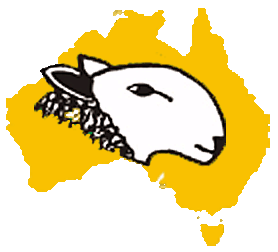
BORDER
AUSTRALIAN
LEICESTER


HISTORY
While the Border Leicesters' beginnings are very much British, its impact on the Australian sheep industry has been enormous.
ORIGIN AND EARLY HISTORY
While the Border Leicesters' beginnings are very much British, its impact on the Australian sheep industry has been enormous.
Their origins can be directly traced back to the Dishley Leicester, made famous by the renowned British livestock breeder Robert Bakewell (1726-1795). It was Bakewell who challenged the then common practice of slaughtering the early maturing stock and then keeping the slower maturing ones to breed from. Bakewell put his theory to the test with the results having a profound impact on livestock breeding and on the economy through increases in production. His fame and prestige as an innovative breeder of livestock soon spread and Dishley saw many enthusiastic breeders visiting to learn of this new way of breeding stock. Among Bakewell’s visitors in 1767 were Matthew and George Cully of Northumberland who took back north with them some of the Dishley Leicesters. Their example was soon followed by several leading farmers on both sides of the border.
After Bakewell’s death in 1795 some of his neighbours formed the Bakewell club. This was done with the object of maintaining the purity of the Dishley sheep. While many flocks of the new Dishley Leicesters were now established in Northumberland and the South-Eastern Counties of Scotland, breeders still regularly went south to buy rams.This practice continued until about 1830, it was at this time the northern sheep were starting to evolve into the sheep we know today. So by the 1850s the practice of using southern rams had all but stopped. The northern type had now become longer in the body, better sprung in the rib, more developed in the brisket and with a much more graceful set of the head and neck.As these changes in type became more apparent there was much discussion on what was the true Bakewell Leicester. It was around this time that northern breeders began calling their sheep Border Leicesters, the name being taken from the border country between England and Scotland. Records show that the Highland and Agricultural Society provided classes for both types from 1869 till 1881 and from then on only for Border Leicesters.
EARLY YEARS IN AUSTRALIA
J.C. Cochrane of Aitkenside, Geelong, Victoria established the first Border Leicester stud of note in Australia in 1881. Then a Mr. Landale, of Wandook, Deniliquin, New South Wales imported 330 stud ewes and 10 stud rams from New Zealand in 1895. This trend continued and over the next 20 years many studs were establish with New Zealand Borders, mostly coming from the Canterbury, Otago and Southland provinces. Stud breeders also continued to import sheep from Scotland to maintain the breeds’ style and character. There was much discussion on which of the two were the better type. The popularity of the Border Leicester continued to grow as breeders adapted them to fit their new environment. In the early to mid 1900s the bred began to develop its reputation as the ideal sire for the production of first cross ewes. These ewes had the advantages of high fertility and good mothering ability, so by 1960 there were over 1100 stud flocks comprising more than 500,000 Border Leicester sheep and lambs in Australia.